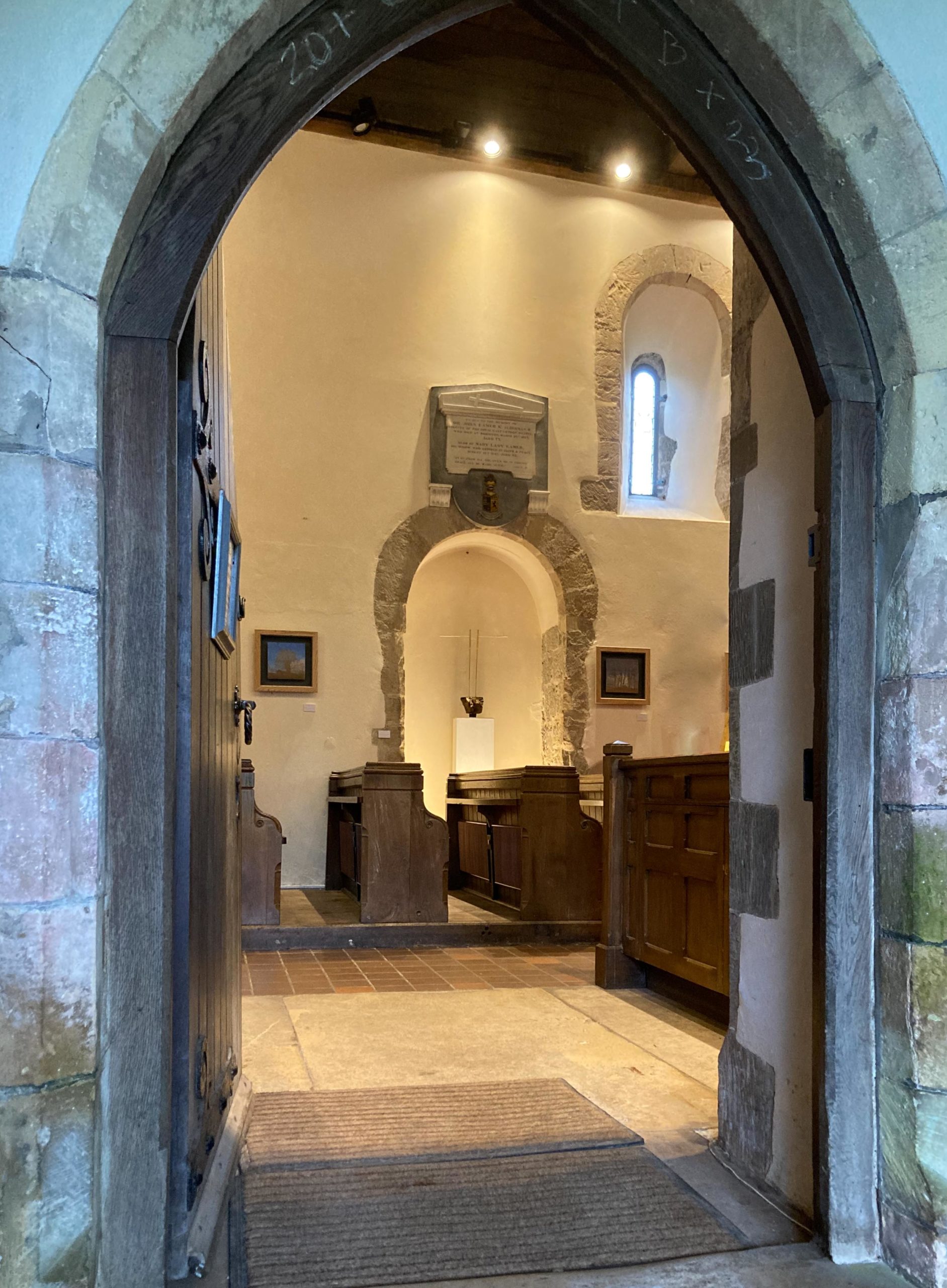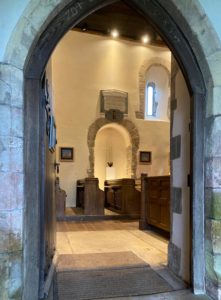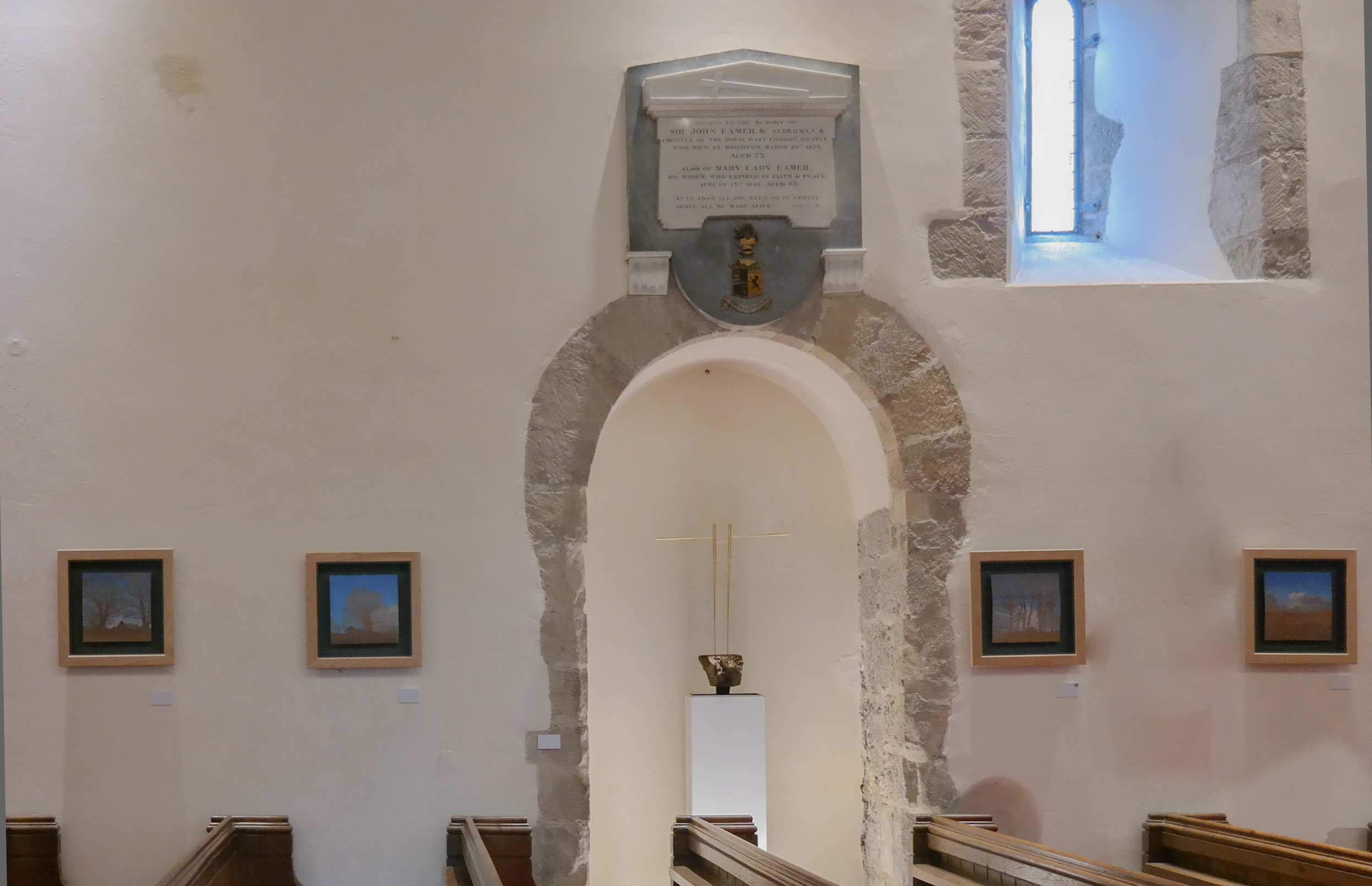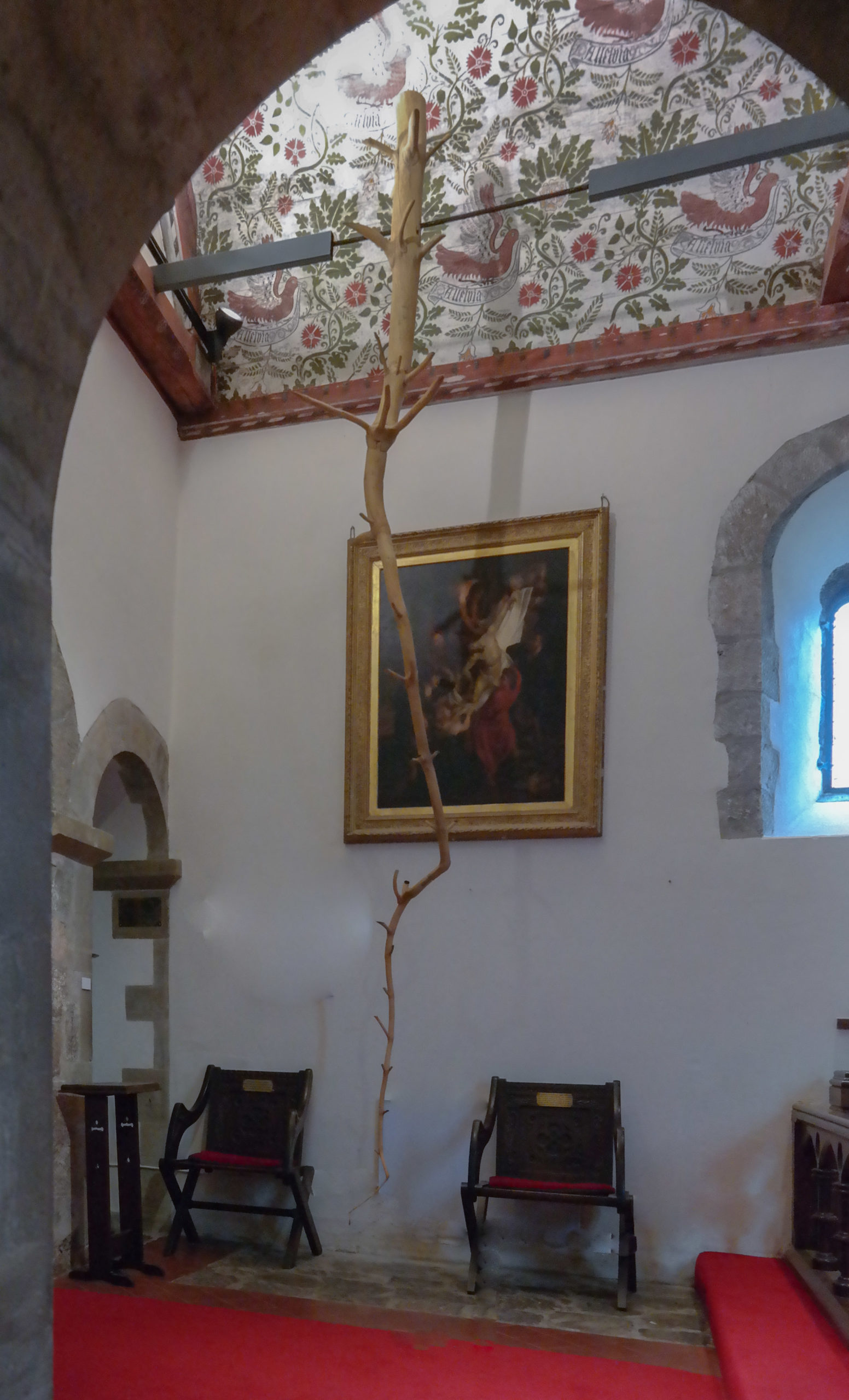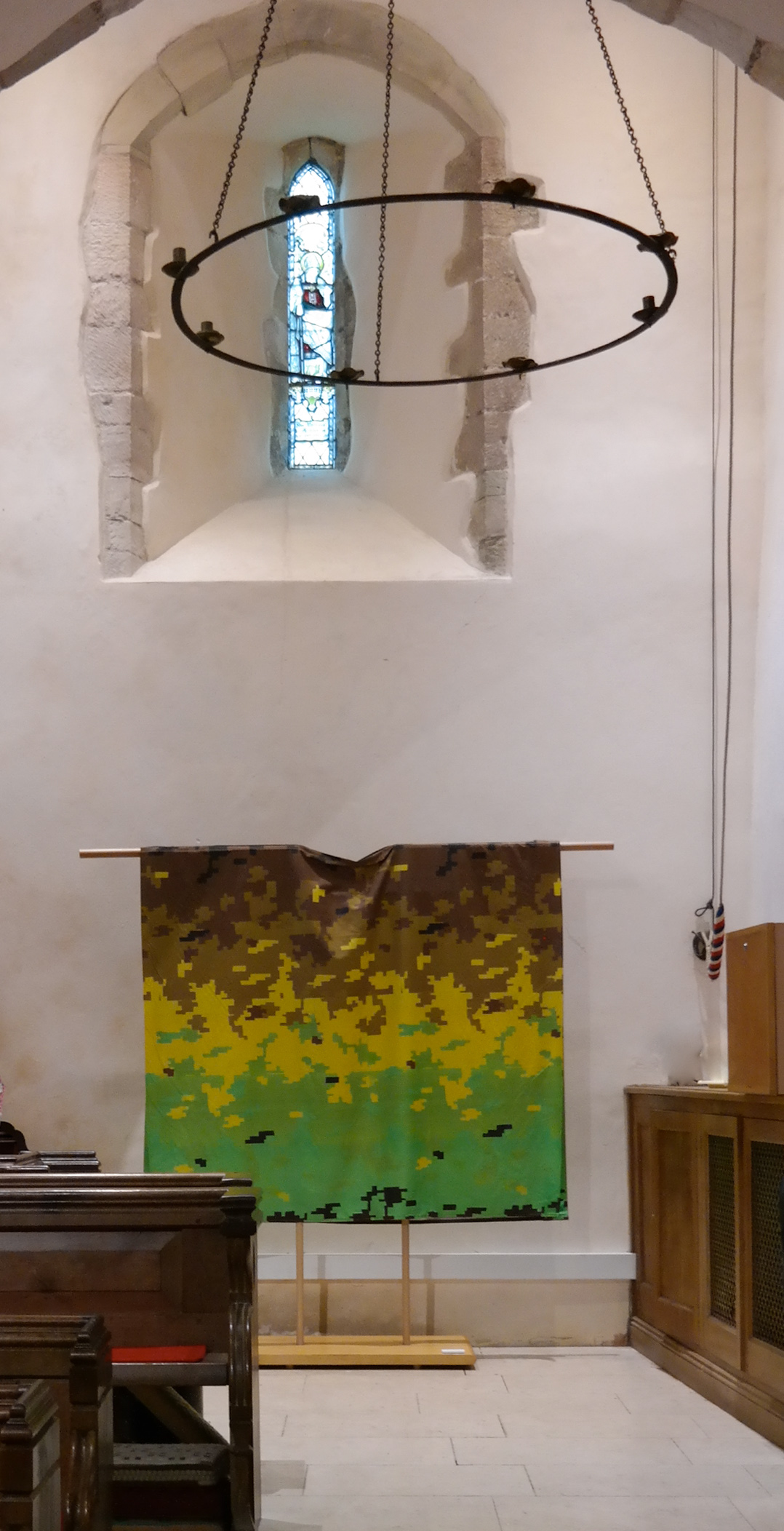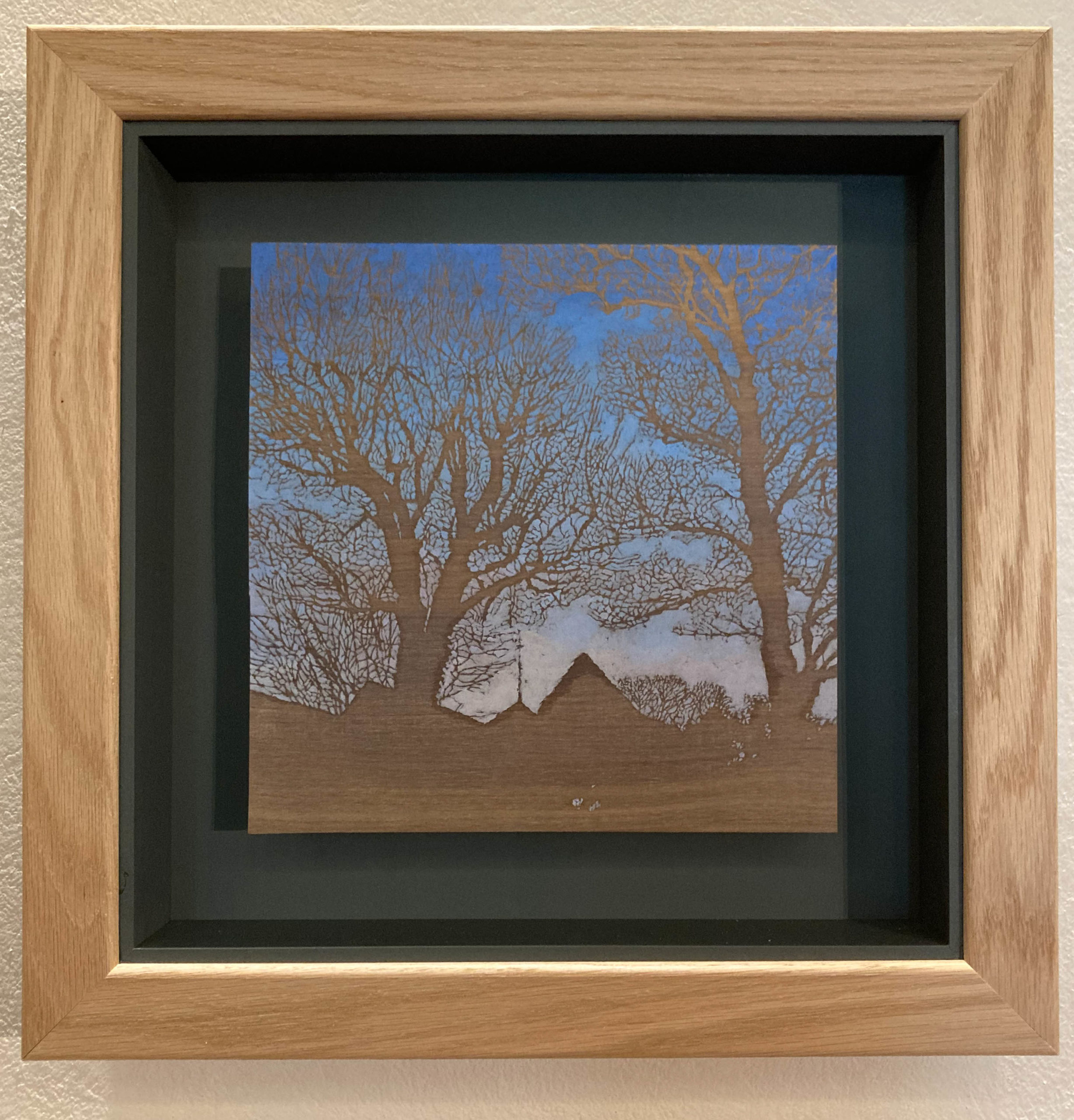St Wulfran’s Church, Ovingdean
The village of Ovingdean nestles in preserved Downland valley a couple of miles from Brighton. Its historic heart of sits within sprawling 20th Century housing developments and consists these days of four or five 17th century houses refaced in the 18th and 19th centuries to comply with the fashionable tastes of that time. To the edge of this cluster, and flanked on three sides by woodland and open Downs, sits St Wulfran’s Church.
Construction on the church is recorded in the Domesday Book occurring between 1066 and 1086 although it has the general appearance of a Saxon building and may have incorporated earlier structures.
The exhibition has the ‘feeling’ of a coherent “installation” working sympathetically with the physical and cultural context of the host structure. The building’s designation as a Scheduled Ancient Monument prevented any very large scale or structural interventions; the installation would took the form of ‘free-standing’ artefacts interacting with the venue through their visual language and cultural associations.
In the context of the installation, the church divided into six main zones of intervention;
(1) the chancel with the painted ceiling,
(2) the blocked Romanesque doorway in the North wall,
(3) the floor area below the tower,
(4) a small area in the nave set aside as a children’s space,
(5) the walls of the nave,
(6) and the churchyard outside.
The Lady Chapel was used to display several paintings on the theme of ‘rescue’ (the Rescue Series).
In common with the research project, the installation carries as its overall theme that of our relationship with objective age, mainly in the objects that comprise our environment but also within ourselves. The theme corresponds comfortably with spiritual aspects of the church as a place of personal contemplation.
My warm thanks go to Father Richard, the Church Wardens and the whole congregation of this lovely church who have been enthusiastic, helpful and welcoming throughout the project.

